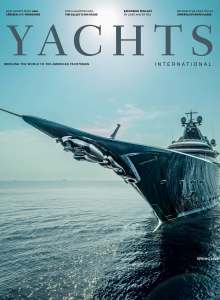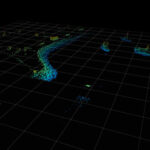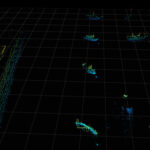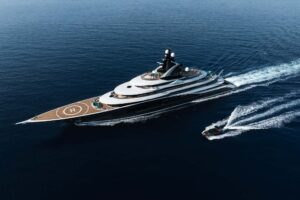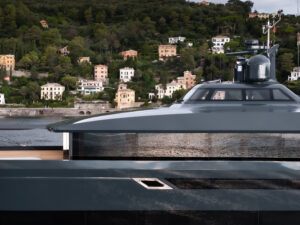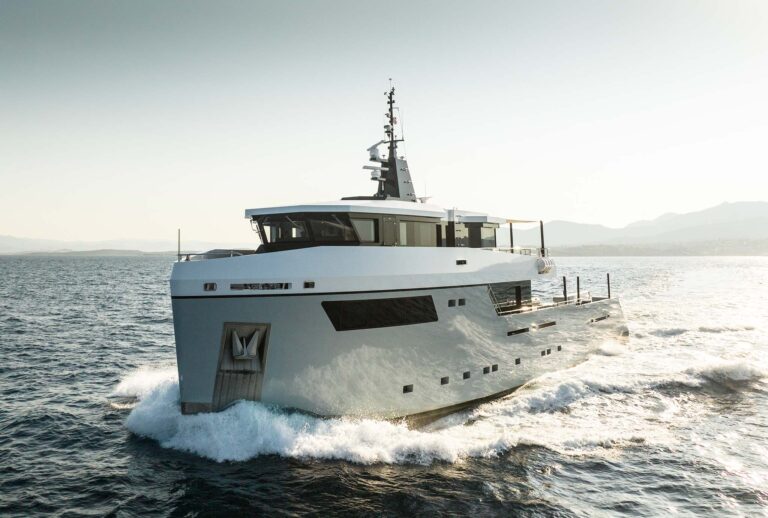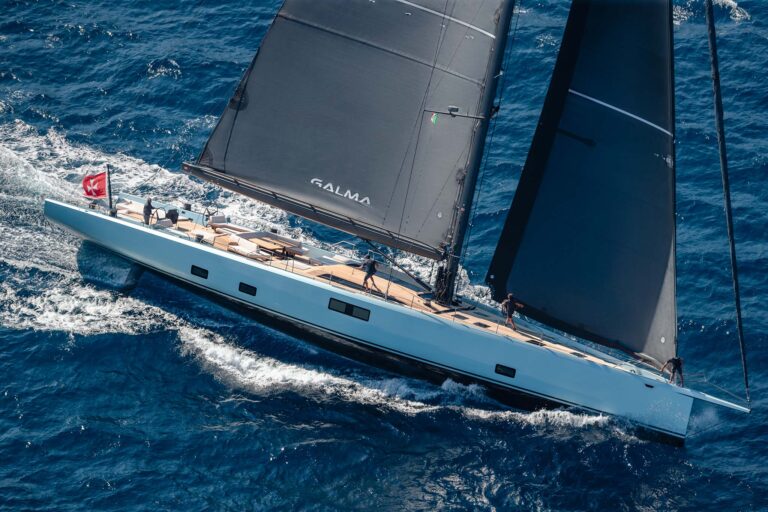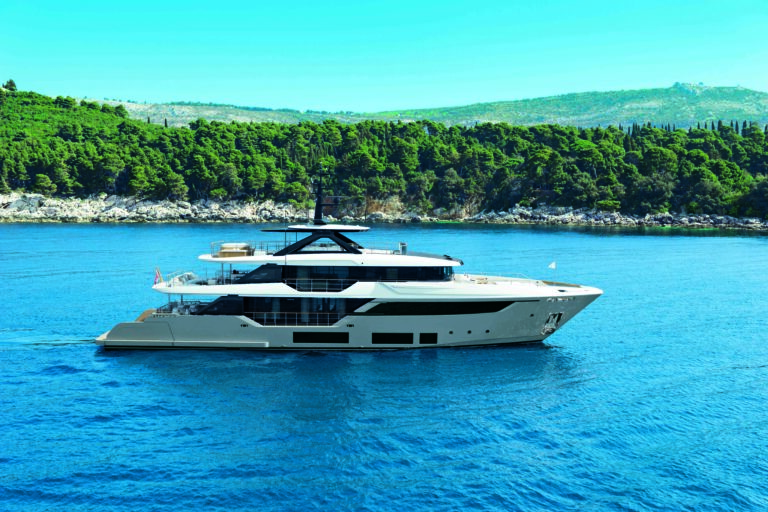For most exhibitors, the Miami International Boat Show offers a venue to showcase their most beautiful and fantastic new products to avid boat lovers from around the world. However, Dave Hall of Silicon Valley’s Velodyne Marine came with a different goal in mind when he brought his shock-mitigating “Martini 1.5” to Miami. While the engineer calls his computer-automated, electric, pneumatic invention “ground breaking,” it is really “ground stabilizing” and tongue-in-cheek, perfect for people who don’t want to spill their martinis.

“A self-stabilizing boat has a little showmanship,” Hall said, “We are looking for the optimum application for the technology then go to that sector.” Hall and his team of engineer/test pilots gave rides to yachtbuilders, commercial boatbuilders and curious technology geeks who wanted to see how the odd-looking vessel ran. The seemingly crudely constructed catamaran is a piece of engineering wizardry that couples two sponsons, connected by a matrix of moving metal legs, with two gyros and actuators keeping the platform stable while it supports a small semi-enclosed cockpit with seats. The actuators incorporate real-time electronic, pneumatic technology so the platform automatically and instantaneously corrects itself, in order to maintain a level position. The result is the experience of “taking the dock with you,” as your boat rides into rough water.
The scalable system was originally devised to fight seasickness, though it also applies to stabilizing ferries, oil-rig embarking and disembarking—or for stabilizing yachts where people are cocktailing. The 37-foot vessel, powered by 2,150hp Evinrude engines, was designed to test 5.5-foot seas at 30 mph and is the second of three planned vessels, one and a half times the size of the first “Martini” boat, hence dubbed Martini 1.5. The next boat under development is 60 feet, fiberglass, with 850hp engines and should handle up to 12-foot seas at 60 mph. Anticipate Martini 2.5 in another year.
Hall is accepting inquiries from recreational or commercial builders and can either license or help design and install the technology. “I just thought I’d let the industry tell me what they wanted,” he said.
As an aside, Hall added another of his inventions, a LiDAR, (Light Detection and Ranging) viewing system to the boat, which generates 1.3 million points per second to measure the vessel and its surroundings. This 360-degree rotating device incorporates 64 laser beams to produce colorful 3–D data images on a computer screen and is being used by leading map content providers for creating the maps now seen on mobile devices and GPS systems. While the LiDAR sensors are used in unmanned cars, mining trucks and military patrol boats, Hall believes LiDAR would be helpful for docking to show obstacles in daylight and at night and he reports positive response from the marine industry. The sale of the LiDAR sensors are funding the R&D for Velodyne Marine, but Hall’s earlier claims to fame were innovations in audio, robotics, optics, and laser systems which became products at Velodyne Acoustics, Inc.

“Engineers are blessed with a lot of software tools now,” Hall said, “Years ago it would have taken 100 men years to do what we’ve been able to do in two years.”
For more information, visit velodynemarine.com, velodynelidar.com or velodyne.com

